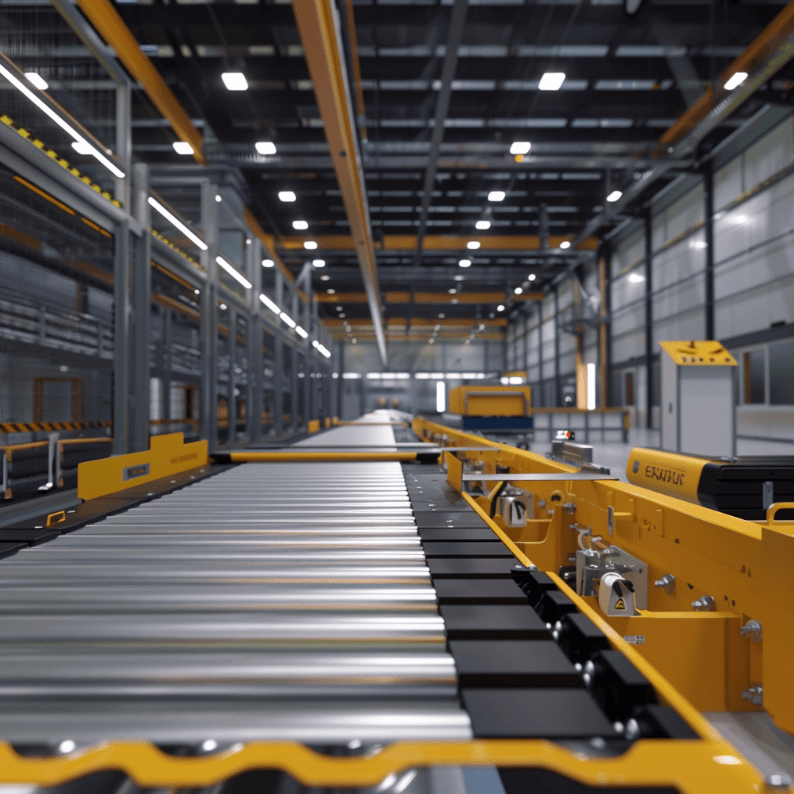Automated material handling examples
Automated material handling solutions are already being deployed across many big-name industries.
Let’s take a look at some major examples:
- Conveyor belts are one of the most common types of automated material handling equipment. They are used to transport materials over short or long distances at a consistent speed. Conveyor belts are popular in manufacturing plants, warehouses, and distribution centers for transporting packaged goods or parts.
- Automated storage and retrieval systems, like vertical lift modules and carousels, are used to organize and store materials in a compact space. They use robotic cranes to automatically store and retrieve materials from their designated storage locations with the push of a button.
- Industrial robots are programmable machines used to perform repetitive or dangerous material handling tasks with speed and precision. Robotic arms are often used for pick and place applications, palletizing, and depalletizing.
Mobile robots, like automated guided vehicles (AGVs), are self-driving vehicles used to transport heavy materials over long distances in factories and warehouses.
- Sortation systems automatically sort, route, and track products as they travel through a facility. They are commonly used in distribution centers to route packages to their proper destination.
Sorters like sliding shoe sorters, cross-belt sorters, and tilt-tray sorters can sort thousands of units per hour into different lanes or chutes based on information like shipping address, SKU number, or product type.
Summing up
Automated material handling systems can be a godsend for optimizing workflow and boosting efficiency in manufacturing and warehouse settings.
Carefully evaluate your operation's unique needs and pain points first. Will any of these systems move the needle on critical KPIs like output, accuracy, and labor costs?
Crunch the numbers to build a solid business case!
Next steps
Future-proof your shop floor with Standard Bots RO1, a flexible six-axis robot that opens up automated material handling for both SMEs and major operations.
- Automate without straining your finances. RO1 delivers essential material handling capabilities at an unmatched price point. Streamline operations and boost your bottom line.
- Optimize throughput with precision and power: RO1's 6-axis design and robust 18kg payload mean it can reliably handle a wide range of materials and tasks.
- Enhance workplace safety and collaboration: Advanced safety features like machine vision allow RO1 to work seamlessly alongside your team, fostering a more productive and safer environment.
- Intelligent automation: Powered by AI comparable to GPT-4, RO1 continually learns and adapts — it grows in value alongside your business.
Our team provides expert guidance to ensure you maximize the impact of your RO1 investment. Experience the difference – try RO1 risk-free for 30 days!


